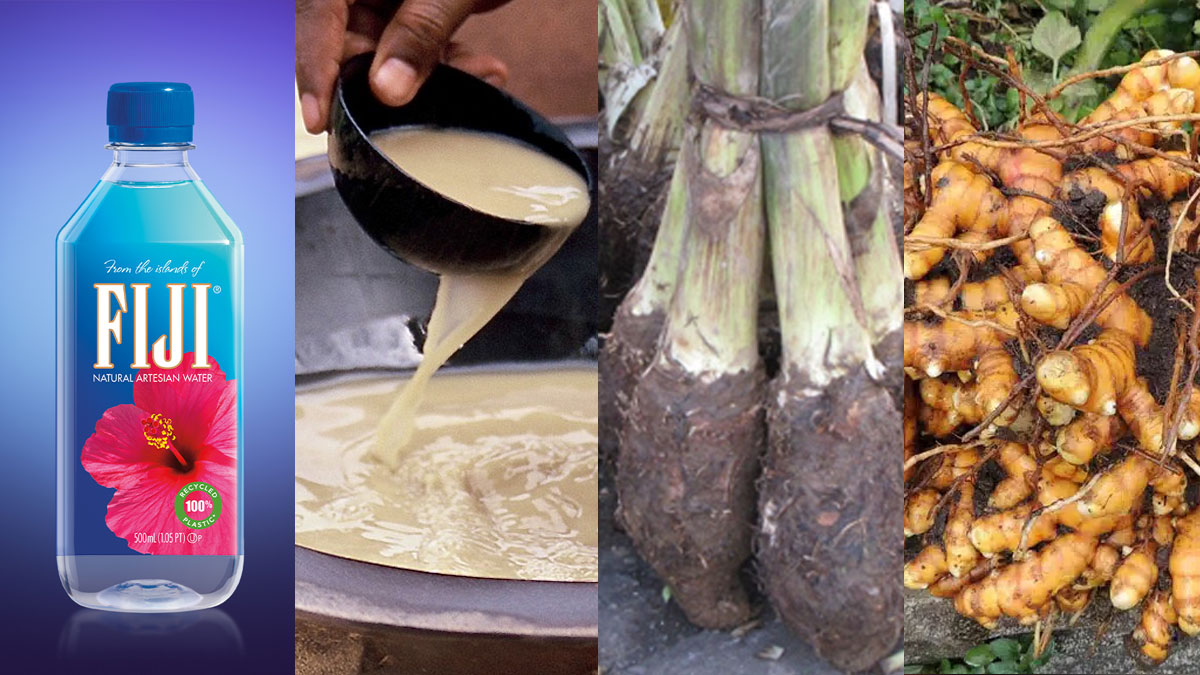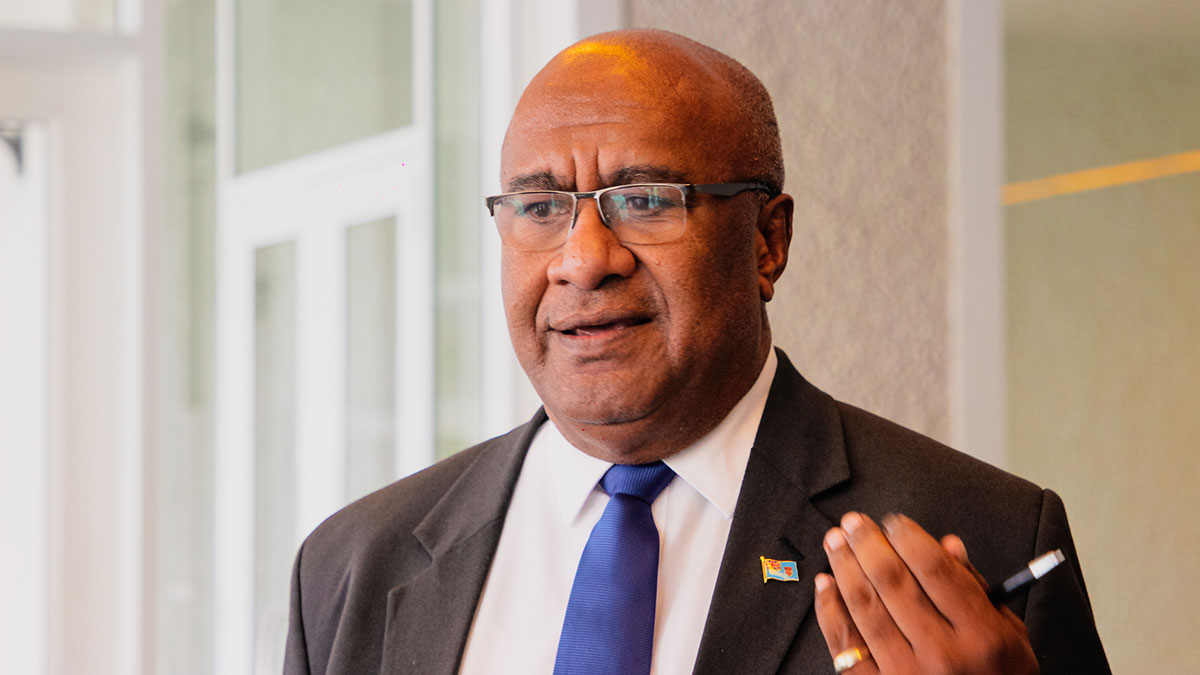
Fiji exports to the United States of America like Fiji Water, kava, dalo and turmeric will be hit hard with the increase in the 32 percent tariffs by the Trump administration.
fijivillage News is trying to speak to the industries that will be largely affected by the US Government’s decision.
In 2022, Fiji exported FJ$482 million worth of goods making US one of the largest export destinations.
Fiji’s exports are largely comprised of agricultural and fisheries commodities.
Traditionally, Fiji’s main agricultural exports have been sugar, fish, taro, and ginger.
Other top exports of Fiji in 2021 included mineral water FJ$238 million, kava FJ$25.93 million, processed fish FJ$43.4 million and turmeric FJ$22.7 million.
Fiji exported US$267 million in water, making it the 4th largest exporter of water in the world.
At the same year, water was the 1st most exported product in Fiji. The main destination of water exports from Fiji are : United States (US$241M), Canada ($US4.3M), Mexico (US$2.9M), United Arab Emirates (US$2.75M), and Australia (US$2.57M).
69 percent of kava exported from Fiji goes to the US.
When approached for comments, a FIJI Water Spokesperson says they are obviously focused on today’s announcement and evaluating its potential impact and exploring options.
FIJI Water says they remain committed to delivering FIJI Water to customers and to maintaining strong trade relations.

The imposition of a 32 percent across the board tariff on Fijian exports into the US is quite disproportionate and unfair, and 96 percent of what the United States exports to Fiji attracts either zero duty or just 5 percent.
This has been highlighted by Deputy Prime Minister and Minister for Finance Professor Biman Prasad as US President Donald Trump has announced a 32 percent tariff on Fijian exports into the US as “reciprocal tariff” rates that more than 180 countries and territories will face under his sweeping new trade policy.
According to the charts shared by Trump and the White House, Fiji charges the US 63 percent tariffs – including currency manipulation and trade barriers.
This 63 percent tariff claim is incorrect as Fiji does not have that level of tariff for any goods or country.
Professor Prasad says they are still trying to get more details on the exact rationale and application of the newly announced retaliatory tariff and will work with key stakeholders and US counterparts to get this resolved.
The Deputy Prime Minister says of the total value of imports from the US last year, 72 percent were at zero import duty, 25 percent imports at 5 percent, and less than 4 percent imports at 15 percent and 32 percent.
Professor Prasad further says the US is an important trade partner for Fiji, accounting for around 10 percent of total trade (exports and imports).
He says the US is also an important source market for Fiji’s tourism (10 percent), remittances inflows (about 30 percent) and a key development partner for the last many decades.
Professor Prasad says Fiji has had a trade surplus with the US where our exports to the US were just below $500 million for the past 3 years while imports grew from $190 million in 2022 to $425 million in 2024.
He says the trade surplus was $293 million in 2022 and declined to $63 million last year.
He says Fiji’s major exports to the US includes mineral water, kava, fish products, sugar confectionery and wood artifacts while major imports from the US includes, medical equipment’s, aircraft parts, machinery and electrical equipment.

Deputy Prime Minister and Minister for Trade Manoa Kamikamica says the 32 percent tariff imposed on Fijian exports to the United States is too high and he will be trying to reduce it to zero, if possible.
Kamikamica says he is going to have a conversation with the US Ambassador to try and find out the rationale and the logic and then try to see how that can be reduced.
He says Fiji exports more than what it imports from the US.
The Deputy Prime Minister says the 32 percent is very high and will impact businesses if it remains the same.
He says some of the larger countries and some of our Pacific brothers and sisters have tariffs of about 10 percent so we just need to work through the logic and find out whether there is any room to reduce the tariffs.
When questioned if Fiji will consider an alternative market, Kamikamica says there are options for water but it is no secret that America is one of the biggest markets for some of our water production.
He adds there will be an impact but it is too early to really be too concerned at this stage.
Stay tuned for the latest news on our radio stations
